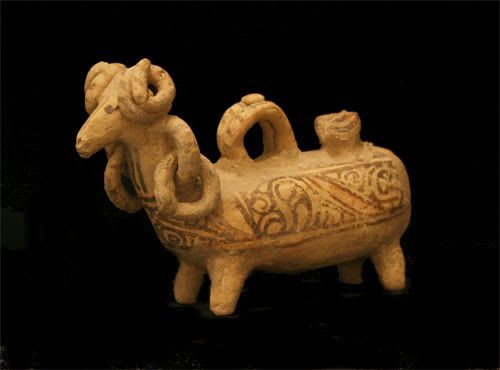Terracotta Ram, 800 CE - 1100 CE
Terracotta
4.25
SP.595
During the High Islamic period, art, culture, and innovation in the Middle East flourished. A liberal and benign succession of rulers ensured the well-being of all cultures, creeds, and ethnicities....
During the High Islamic period, art, culture, and innovation in the Middle East flourished. A liberal and benign succession of rulers ensured the well-being of all cultures, creeds, and ethnicities. Animists, Christians, and Jews were all able to express their ideals and worship in the medium of their art. This Ram is a striking example of the creativity and capability of a votive artist under Islamic dominion. The exceptional grace of its execution, the whimsical and creative nature of its shape, and the intricate beauty of its ornamentation make it a wonderful piece of art, and a very real presence. The piece is dominated by the charming earrings and elegant horns that frame the Ram's face. The earrings give the stout and severe body of the Ram a sense of feminine delicacy, and introduces a touch of human vanity and élan to its character. The horns, such active and lively coils- give an element of rustic strength to the quiet face. Across the entire figure, and especially prominent along the ram's fat sides, runs an elegant and intricate motif. It's bold and black lines are a regal reminder of the Islamic influence on the polytheist that crafted this votive. This ram was certain to please any of the deities it might have been dedicated to, and it continues to delight us today with the originality of its expression and the whimsy of its presence.



